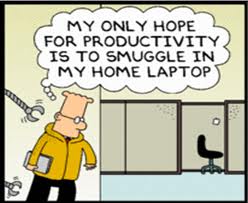July 10th 2008 was a watershed date in personal computing. On this date Apple launched the App Store marking the first time that software applications could be purchased and installed onto a mobile device without having to sync with a PC or laptop. The App Store, launched with 552 applications, has now over 1 million apps. The launch of the App store wasn’t just a key moment for personal computing; this event also triggered fundamental changes in enterprise computing as well.
Our personal technology experience has changed our business IT expectations. The ability to download a game or a lifestyle software application in seconds and use it intuitively without recourse to a user guide is now taken for granted in our personal lives. When it comes to how we use software in our professional lives things have moved much slower. In the enterprise long software purchase lifecycles with large up front license and professional services costs still dominate. However this model is now under pressure from post pc employees frustrated with delays in software selection, approval, implementation and change timescales as well as business leaders determined to drive down upfront cost and total cost of ownership.
The consumerization of IT is the manifestation of employee desire to bring their personal IT experience into their working lives. Employees are increasingly creating their own technology solutions to address business problems. Bring your own technology (BYOT) has been most aggressively adopted by senior executives with Forrester reporting that 77% of executives buy their own hardware and 45% self-provision software. With this senior level endorsement BYOT is an issue that’s not going away for IT departments.
Into this brave new world steps the Business Process Management (BPM) suite. Established BPM practices are an anachronism in the post pc, consumerized business environment of today. Creation of BPM centers of excellence, the complexity of many BPM suites, heavy implementation, integration and professional services costs contrast greatly with the demands of the consumerized employee. Employees and executives are looking for a short term tactical play where previously BPM only offered a strategic one.
This too is now changing. Newly cloud and mobile enabled, today BPM suites now have the tools to respond to consumerization. Business Process as a Service (BPaaS) and Smart Process Applications (SPAs) are emergent BPM trends that represent the evolution of the BPM market to address the requirements of the post pc generation.
Rather than product or price, in the new millennium business agility and customer experience are the key competitive differentiators. Whether it’s a pop-up store or Instagram, where a $1Bn business was built on 13 people and scaled to over 14M users in little over a year using a variety of cloud technologies, the ability to rapidly deliver processes gives an organization the edge. Step forward consumerized BPM.





